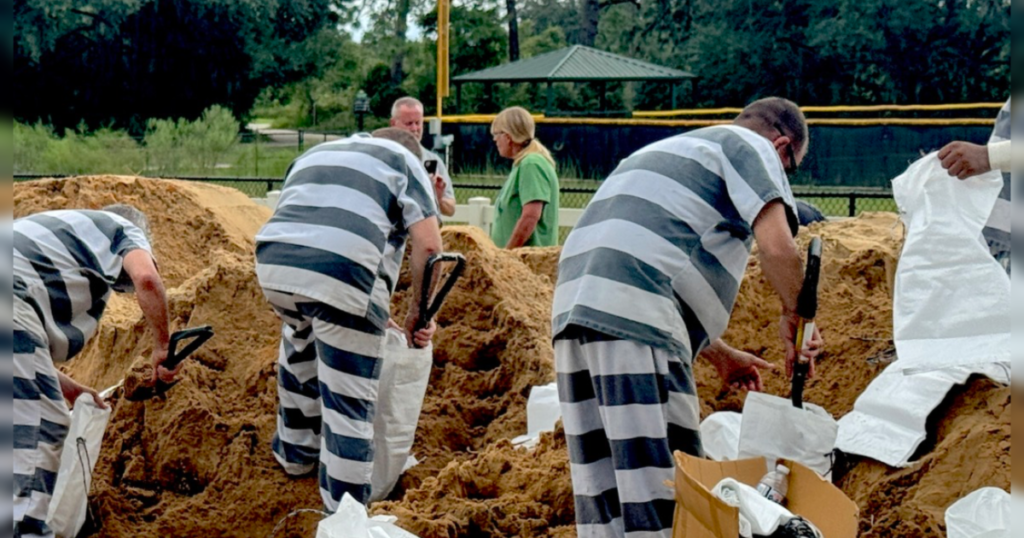As Hurricane Milton approaches Florida, the mobilization of inmates for community assistance has sparked significant attention and discussion. The Lake County Sheriff’s Office recently reported that low-security inmates have been deployed to help fill sandbags for residents who are unable to do so themselves. This initiative aims to ensure that vulnerable residents are better prepared for the storm’s impending impact. A video showcasing these inmates filling sandbags was widely shared across social media platforms, prompting both support and criticism from various factions of the public. Many praised Florida Governor Ron DeSantis for spearheading the program, highlighting his administration’s efforts to utilize available resources for disaster preparedness.
In his communications regarding this initiative, DeSantis’ communications director, Brian Griffin, confirmed that utilizing low-risk inmates to assist in emergency preparation is indeed a policy in place. He emphasized that these inmates would be supervised while engaging in tasks like cleaning up debris and distributing supplies during hurricane threats. This revelation aligns with previous discussions and actions taken by the governor, underscoring a strategy aimed not only at aiding communities but also providing inmates with constructive work opportunities. These efforts to engage inmates in public service roles have also ignited conversations about the broader implications of prison labor in Florida.
The sheriff’s office outlined specific locations where the sandbag operations are being conducted, including PEAR Park, Minneola Athletic Complex, and North Lake Regional Park. The public is encouraged to visit these sites, which operate daily from 7 a.m. to 7 p.m., for sandbag supplies until hazardous weather conditions arise. This organized response demonstrates local authorities’ proactive measures in preparing the community ahead of the storm. It aims to streamline resources while maximizing community involvement in disaster preparedness efforts.
DeSantis had previously suggested utilizing inmates in similar emergency responses, particularly after Hurricane Helene affected Pinellas County. In the aftermath of such natural disasters, the governor advocates for low-risk inmates to take part in labor that benefits not only public spaces but also private properties, emphasizing that inmates are already engaged in labor activities as part of their correctional programs. This perspective presents a practical approach to managing resources effectively during emergencies, allowing for a collaborative effort between local governments and the prison system.
The approach of enlisting inmates for such projects raises important questions about the ethical implications and potential benefits of prison labor. While some commend the initiative for allowing inmates to contribute positively to their communities, others raise concerns about exploitation and the broader implications of convict labor in American society. Public opinion on the matter remains divided, as many see value in rehabilitating inmates through meaningful work, while others criticize how these programs may take advantage of vulnerable populations.
As Hurricane Milton approaches and the state braces for potential devastation, the involvement of inmates in disaster preparedness efforts provides a unique lens into the ongoing discourse surrounding correctional policies in Florida. Beyond immediate storm preparation, the situation reveals the complexities of using prison labor in emergency management and raises essential questions about accountability, ethics, and the societal impacts of such practices. Balancing these considerations with the urgency of addressing community needs illustrates the multifaceted nature of disaster response initiatives as Florida navigates the challenges posed by natural disasters.

